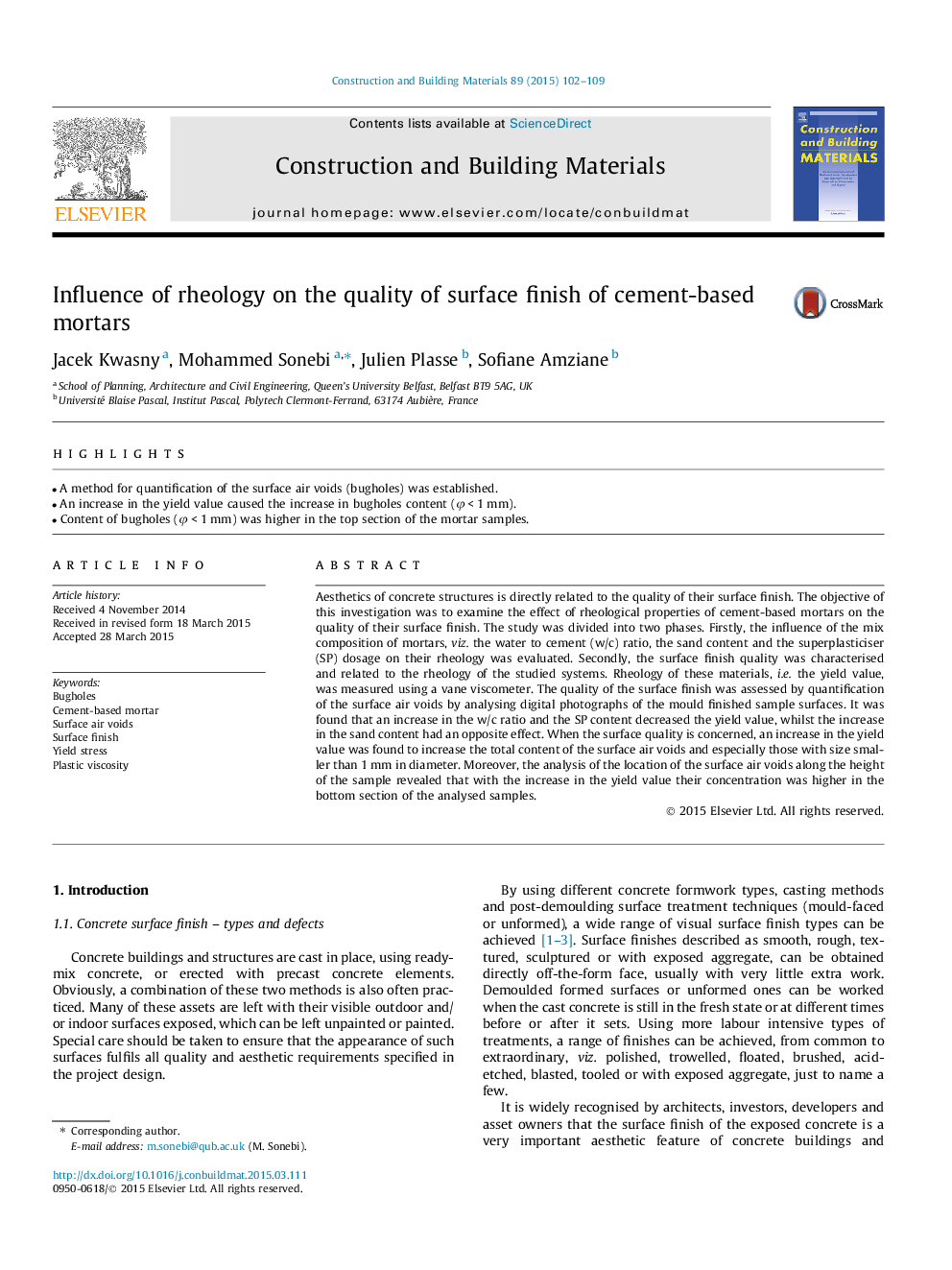| Article ID | Journal | Published Year | Pages | File Type |
|---|---|---|---|---|
| 256903 | Construction and Building Materials | 2015 | 8 Pages |
•A method for quantification of the surface air voids (bugholes) was established.•An increase in the yield value caused the increase in bugholes content (φ < 1 mm).•Content of bugholes (φ < 1 mm) was higher in the top section of the mortar samples.
Aesthetics of concrete structures is directly related to the quality of their surface finish. The objective of this investigation was to examine the effect of rheological properties of cement-based mortars on the quality of their surface finish. The study was divided into two phases. Firstly, the influence of the mix composition of mortars, viz. the water to cement (w/c) ratio, the sand content and the superplasticiser (SP) dosage on their rheology was evaluated. Secondly, the surface finish quality was characterised and related to the rheology of the studied systems. Rheology of these materials, i.e. the yield value, was measured using a vane viscometer. The quality of the surface finish was assessed by quantification of the surface air voids by analysing digital photographs of the mould finished sample surfaces. It was found that an increase in the w/c ratio and the SP content decreased the yield value, whilst the increase in the sand content had an opposite effect. When the surface quality is concerned, an increase in the yield value was found to increase the total content of the surface air voids and especially those with size smaller than 1 mm in diameter. Moreover, the analysis of the location of the surface air voids along the height of the sample revealed that with the increase in the yield value their concentration was higher in the bottom section of the analysed samples.
